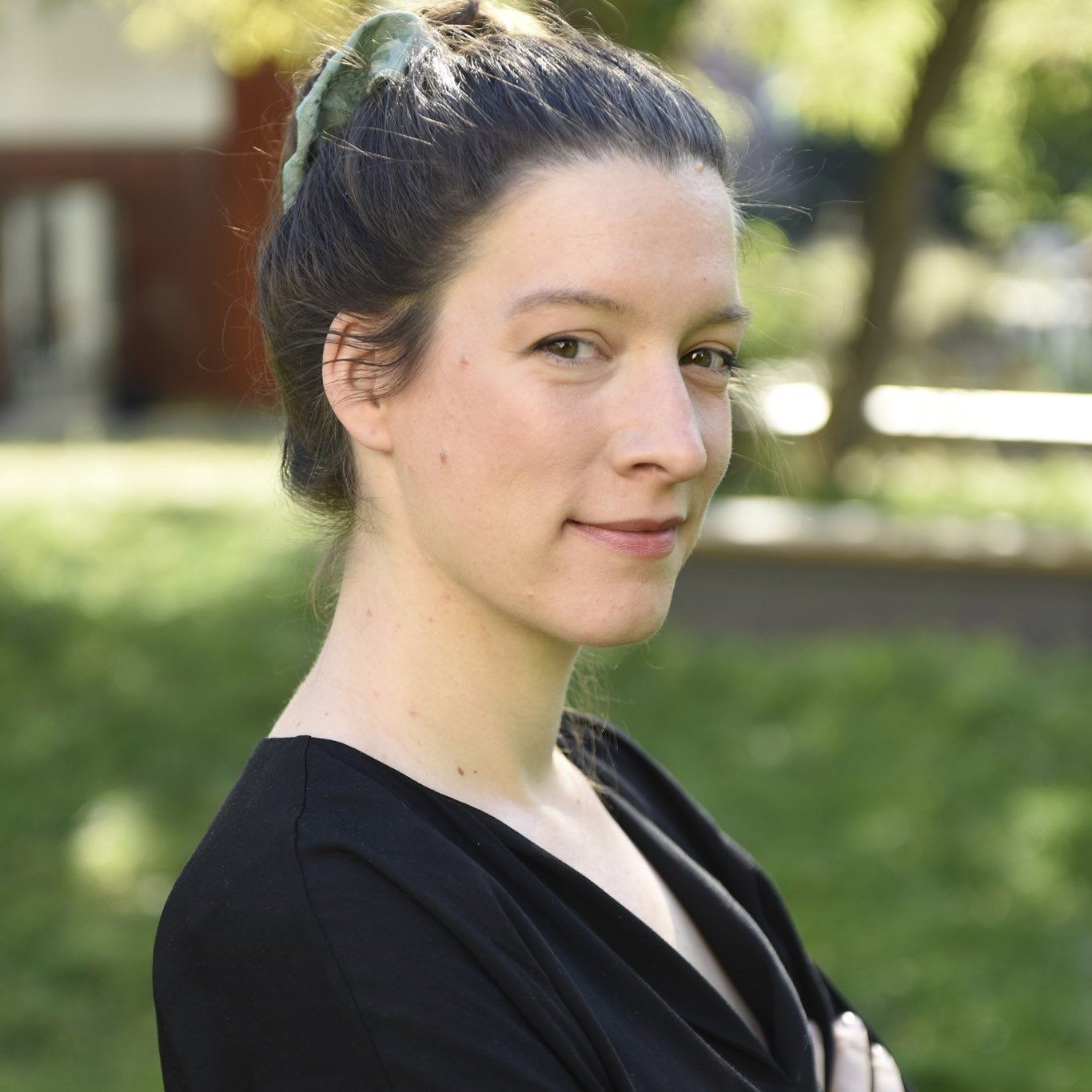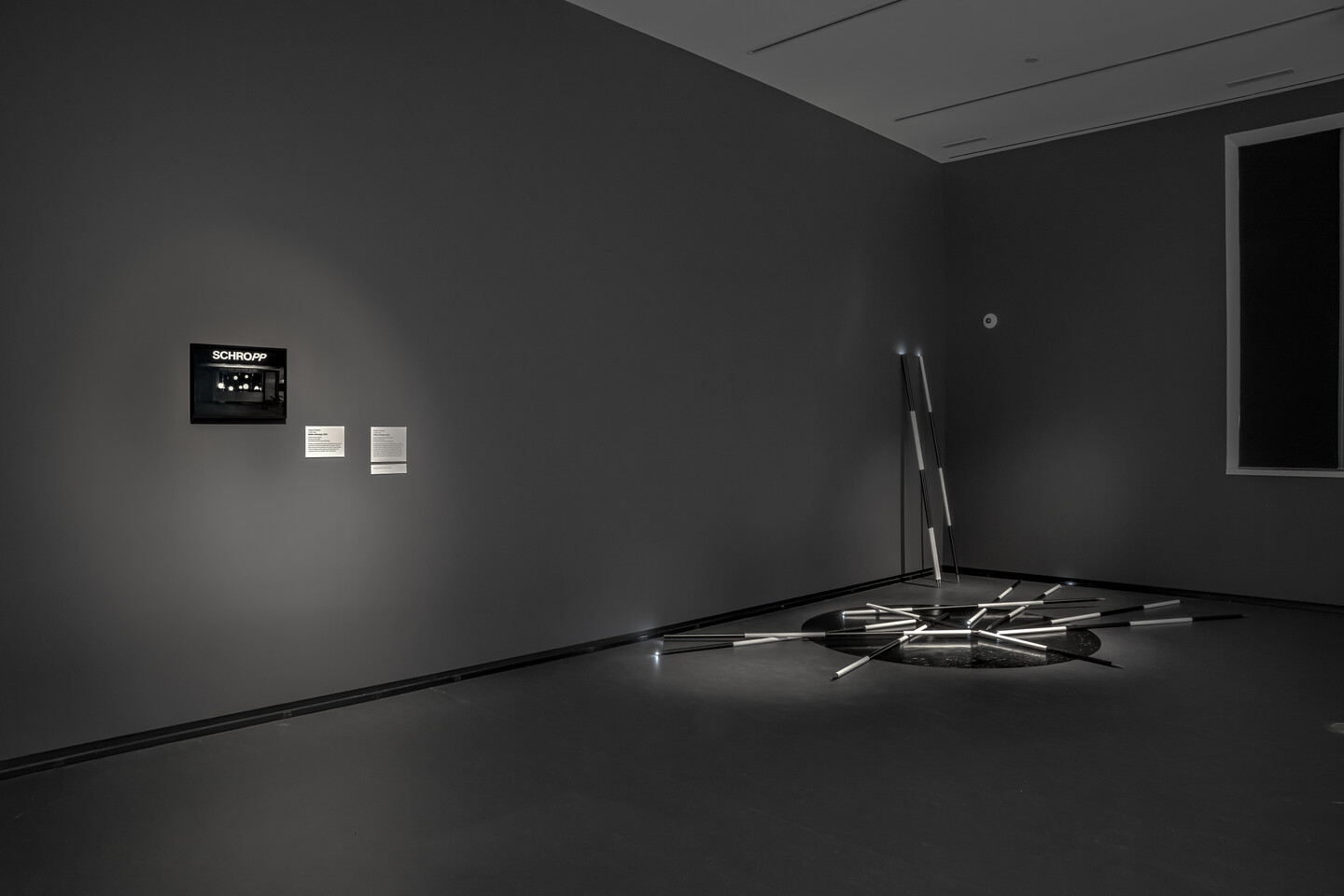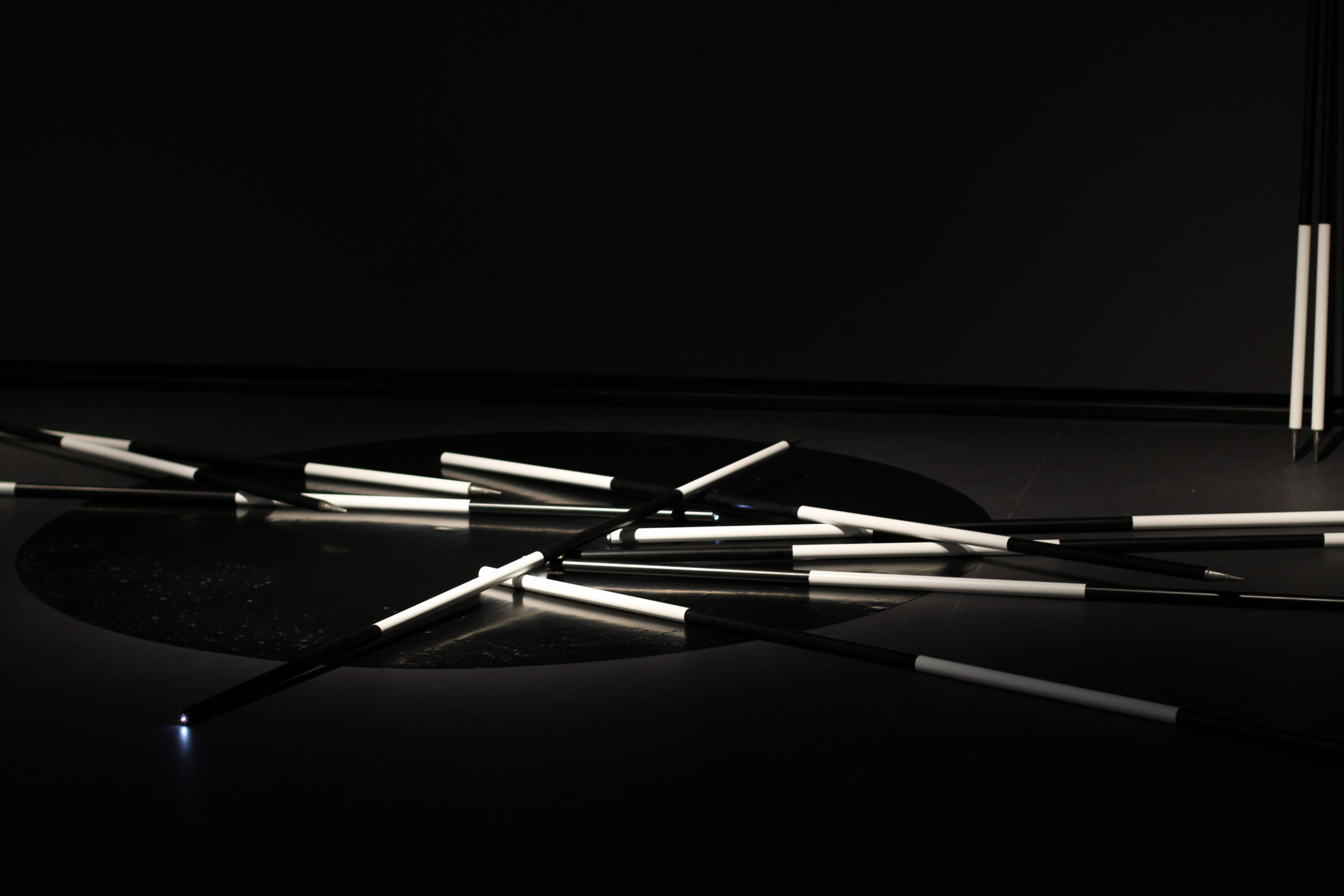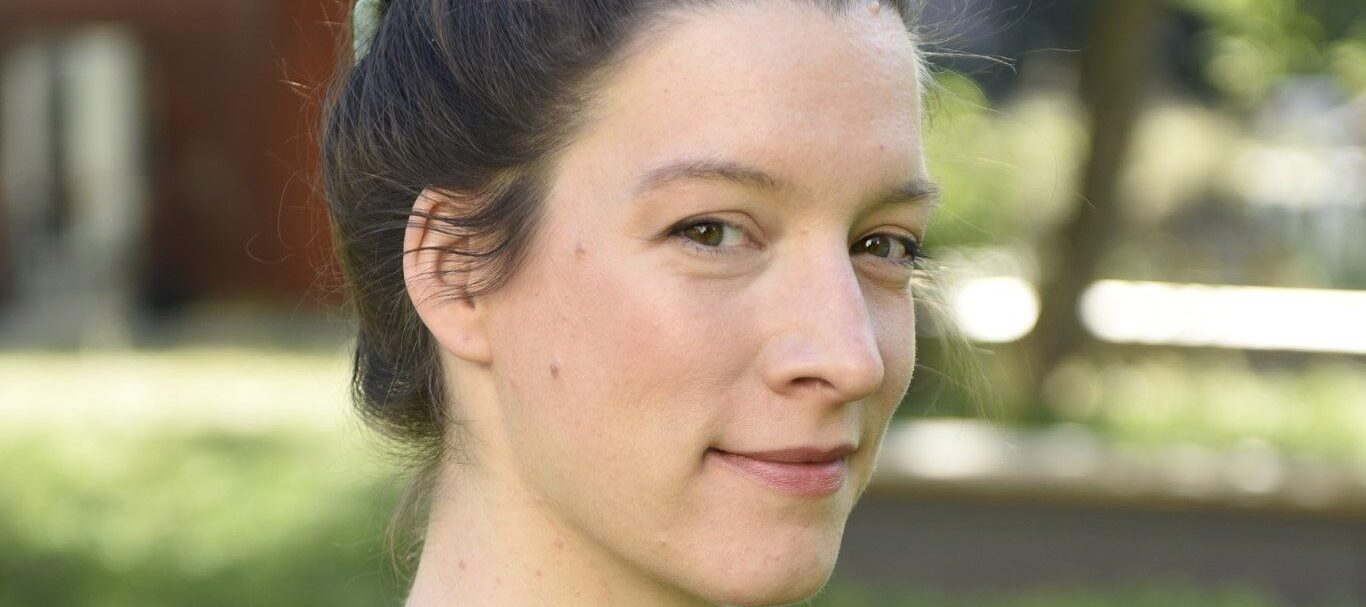The seventh installment of NMWA’s Women to Watch exhibition series, New Worlds, is presented by the museum with the integral partnership of our national and international outreach committees.
The exhibition showcases 28 contemporary artists who respond to our extraordinary times—the global pandemic, advocacy for social reform, and political division—by reimagining the past, presenting alternate realities, and inspiring audiences to create different futures. We spoke with some of the participating artists about their featured work and practice.
Artist: Sophia Pompéry
Nominating Committee: Germany Committee

1. What themes does your work in New Worlds address?
The installation entitled Fluten (Floods)(2023) consists of a black latex circle, perforated and pitted at the edge, and alignment rods arranged like a pick-up game. The latex mat represents the physical map of the Arctic Circle’s light pollution. At 2°C global warming, what is the rise of the sea in hectares, gallons, or miles? The measurement of the world and its interpretation are based on agreement, and it is up to us to accept or not accept the tools for it—or rather to find a completely different use.
2. Is this work representative of your oeuvre? How does it fit into your larger body of work?
Yes, my artistic practice consistently revolves around the convergence of art, physics, and philosophy, using commonplace objects to create experimental arrangements that challenge perceptions and prompt reflection. My work is dedicated to the relationship of forces between physical laws, humans, and the environment. To grasp the epochal impact of climate change from a subjective perspective is existential, however nearly impossible. Capturing this fragility of human scales is my goal.
What is the nature of reality, the probability of the phenomena depicted, and the (im)possibility of their occurrence? I track down absurdities and paradoxes, visualizing what is often elusive to the eye. I have an interest in small errors, spotted in places where we would least expect them. I play with our routines and perceptual habits, calling into question clichés and notions ingrained in our memory.

3. As an artist, what are your essential materials and/or tools for building a new world?
I am not limited to a medium or certain material. Sometimes I have the impression that I work in everything — except painting. My work consists of photography, video, and site-specific or ready-made objects. The connecting element is my desire to experiment and document a physical state. This often results in works with a geographical reference, such as maps or measuring instruments. These are often faded or blackened. I create a tabula rasa, an unoccupied place, as a landing strip for the viewer’s own imagination on how the future can be shaped.

4. How have the events of the past several years—the global pandemic, increased advocacy for social reform, and striking political division—changed or challenged your practice?
They have undoubtedly influenced and challenged my artistic practice. The increase in extreme weather events, such as wildfires, floods, and heatwaves, has sharpened awareness of climate change. The urgency of environmental concerns has been heightened, prompting a deeper exploration of the interconnectedness of human actions and the planet. In 2020 I became a mother. This also reinforced my understanding of the intergenerational contract. We must leave an intact planet to the next generation. They have a right to it, and we must do everything we can today to make this possible.
5. If you could travel to any time, past or future, when and where would you go? Why?
I would journey to a future where humanity has successfully embraced sustainable practices, achieved global environmental harmony, and fostered a deeper connection between humans and nature. It would be a great source of inspiration.
New Worlds: Women to Watch 2024 is on view at the National Museum of Women in the Arts from April 14 to August 11, 2024.
